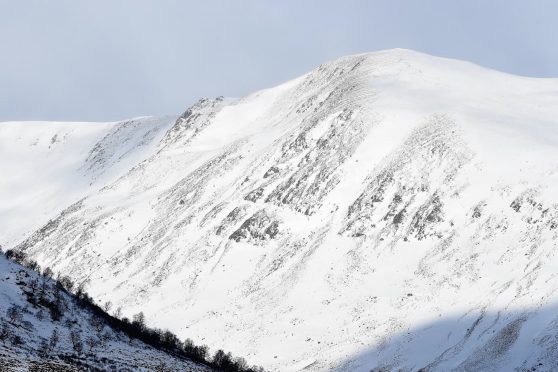A big avalanche has been recorded on a Scottish mountain range.
The 66 feet wide “full depth” avalanche ran for 410 feet at Coire Dubh in Creag Meagaidh.
The mild winter and lack of snow has seen only 14 avalanches recorded by the Scottish Avalanche Information Service (SAIS) so far this winter.
But an SAIS recorder came across the massive snow slide in Coire Dubh, on the south west flank of the Carn Liath massif.
“The avalanche was about 20m across in the start zone and ran out about 125m with the debris fan widening in the lower reaches,” he wrote in a blog.
“The larger blocks at the toe of the debris are about 1.5m cubic, big enough to infer some cornice involvement – perhaps the trigger? “The large stone blocks in the toe of the avalanche run out zone were found to be part of pre-existing talus deposits near the bottom of the crag. Still a few old cornices around, too.”
All of Scotland’s monitored mountain areas were showing “low” risk of avalanche yesterday.
And all of Scotland’s five ski resorts were shut for snow sports due to a lack of the white stuff.
This winter’s avalanche warning service for the main areas enjoyed by hillwalkers and climbers started on December 16.
So far there have been 14 recorded.
The number of avalanches in the Scottish Highlands fell last season – but there were still five deaths linked to the killer snow slides.
The vital warning service provides climbers and hill walkers with the avalanche risk on Scotland’s mountains.
The SAIS issues daily reports for the six operational areas of Lochaber, Glencoe, Creag Meagaidh, Southern Cairngorms , Northern Cairngorms and Torridon. Last season, the organisation’s team of forecasters recorded fewer avalanches than the previous winter – 205 compared to 237.
But more than 100 walkers and climbers were involved in avalanche incidents.
Three people died following avalanches that occurred in a 10-day period in February.
SAIS added that two other fatalities during the winter of 2015/16 may also have involved avalanche activity.
Of the avalanches, SAIS said 159 were released naturally and 46 were incidents triggered by people.
Some of the avalanche occurrences were minor, but a total of 21 people were carried down by the snow slides.
February saw the deaths of Adrian Bankart, 54, from Derbyshire, following an avalanche on Creag Meagaidh and Rachel Slater, 24, and Tim Newton, 27, from Bradford, who mountain rescuers say were caught by an avalanche before starting a climb on the North Face of Ben Nevis on Valentine’s Day.
In January last year two climbers – including a rescue team member – died climbing in Glen Coe.
Joe Smith, 23, who lived in Kinlochleven in Lochaber, perished with experienced mountain skills instructor Simon Davidson, 34, who lived in Fort William.
The pair probably plunged “several hundred feet” on January 16.
Mr Smith, who was originally from Lancashire, was a member of the Glencoe Mountain Rescue Team that found their bodies.
It is believed the men – who were friends – may have got caught up in an avalanche.
During the winter of 2012-13, eight people died because of avalanches. It was the highest number of deaths in five seasons of SAIS forecasts.
The service provides information on the stability of snowpack on the mountains from between December and April.










